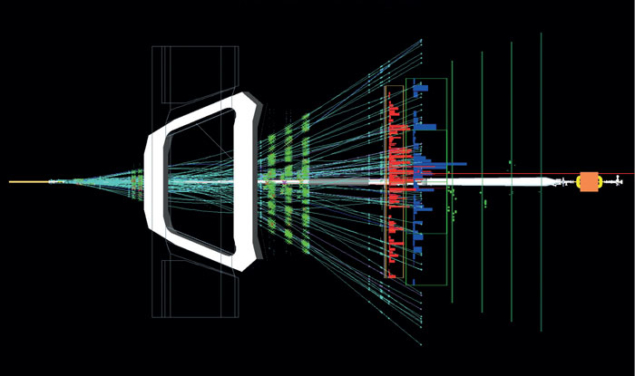
Unlike the other three large experiments at the LHC, LHCb did not participate in heavy-ion runs in 2010 and 2011. This was because the forward region covered by the experiment, which corresponds to angles below 20° with respect to the beam axis, has been optimized for the study of heavy quarks in the proton–proton (pp) collisions that the LHC provides for most of the year. In the usual heavy-ion environment, i.e. the collisions of two lead-ion beams (PbPb), the density of tracks in this region would be so high that LHCb’s tracking detectors would be saturated with hits. However, the decision to run with proton–lead-ion (pPb) collisions for the next heavy-ion run opened the door for LHCb to participate, as the track occupancies would to be more similar to the usual pp running.
In the recent test of this mode of operating the LHC, collisions were provided for a few hours in the early morning of 13 September (Celebrations, challenges and business as usual). The LHCb detector worked perfectly during the test, as the figure shows, and it was exciting for the LHCb team to see this new category of events being recorded. The data were analysed quickly and clean signals were reconstructed for decays of KS and Λ decays (long-lived particles containing the strange quark). The signals were found to be even cleaner than equivalent ones extracted from pp data. This was to some extent expected, because the luminosity was low during the test run, so there were only single primary pPb interactions, whereas in pp running there may be four or more primary interactions in the same event in LHCb. However, once the signals had been normalized to the number of primary vertices, there still remained a factor of three or so enhancement in the pPb data compared with pp.
This is a first indication of the interesting physics that can be studied in the full pPb run, currently scheduled for early in 2013. With its high-precision vertex reconstruction and powerful particle-identification capabilities, the LHCb experiment should provide extra information to complement the measurements from the other experiments. In particular, the production rates of heavy-flavour states such as the J/ψ and Υ, or charmed particles, will be of interest in the forward region.





